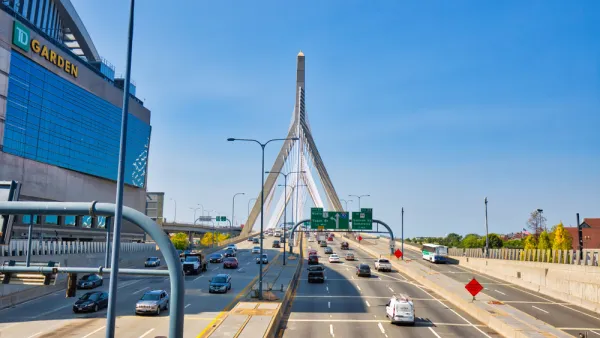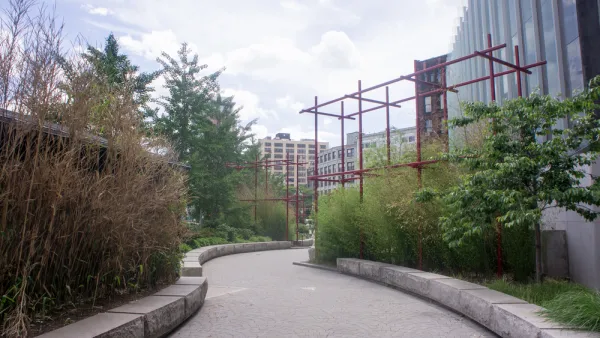Ten years after the completion of the Central Artery and Tunnel project—or the Big Dig, as it's more commonly known—has the project become more justifiable?
Anthony Flint takes a look back at the Big Dig—that infamous, long-delayed, well-over-budget project that created the most expensive highway in U.S. history.
After Flint spends a few paragraphs writing in a style close to prose poetry to describe the development process for the Central Artery and Tunnel project, we arrive to the present day—ten years after the official completion of the project. "How are we feeling now?" Flint asks. "Maybe there’s room for some grudging appreciation."
The feature length article provides background on the political and planning processes that lead up to the project before focusing on the outcomes of the project. On that latter point, Flint reports a mixed bag regarding the congestion relief pitched as a primary benefit of the project: "Looking at the new roadway system by itself, the Central Artery and Tunnel project is solving that problem [of congestion], with capacity to spare." Yet also, "[t]he theory of induced demand…has played out as predicted, particularly at the Ted Williams Tunnel, where traffic typically stacks up every evening trying to get to East Boston, Logan, and points north."
Flint also uses the perspective offered by the passage of town to analyze some of the design and execution of the project. One line sums up the analyses well: "for every triumph, there were gaffes." The article also includes evaluations about the potential transit investments that could have been funded with some of the project's $15 billion price tag as well as some of the project's benefits to the city's landscape, urban design, and development market. Flint concludes by considering whether the project could have been conceived and completed any other way.
FULL STORY: 10 years later, did the Big Dig deliver?

Analysis: Cybertruck Fatality Rate Far Exceeds That of Ford Pinto
The Tesla Cybertruck was recalled seven times last year.

National Parks Layoffs Will Cause Communities to Lose Billions
Thousands of essential park workers were laid off this week, just before the busy spring break season.

Retro-silient?: America’s First “Eco-burb,” The Woodlands Turns 50
A master-planned community north of Houston offers lessons on green infrastructure and resilient design, but falls short of its founder’s lofty affordability and walkability goals.

Test News Post 1
This is a summary

Analysis: Cybertruck Fatality Rate Far Exceeds That of Ford Pinto
The Tesla Cybertruck was recalled seven times last year.

Test News Headline 46
Test for the image on the front page.
Urban Design for Planners 1: Software Tools
This six-course series explores essential urban design concepts using open source software and equips planners with the tools they need to participate fully in the urban design process.
Planning for Universal Design
Learn the tools for implementing Universal Design in planning regulations.
EMC Planning Group, Inc.
Planetizen
Planetizen
Mpact (formerly Rail~Volution)
Great Falls Development Authority, Inc.
HUDs Office of Policy Development and Research
NYU Wagner Graduate School of Public Service



























